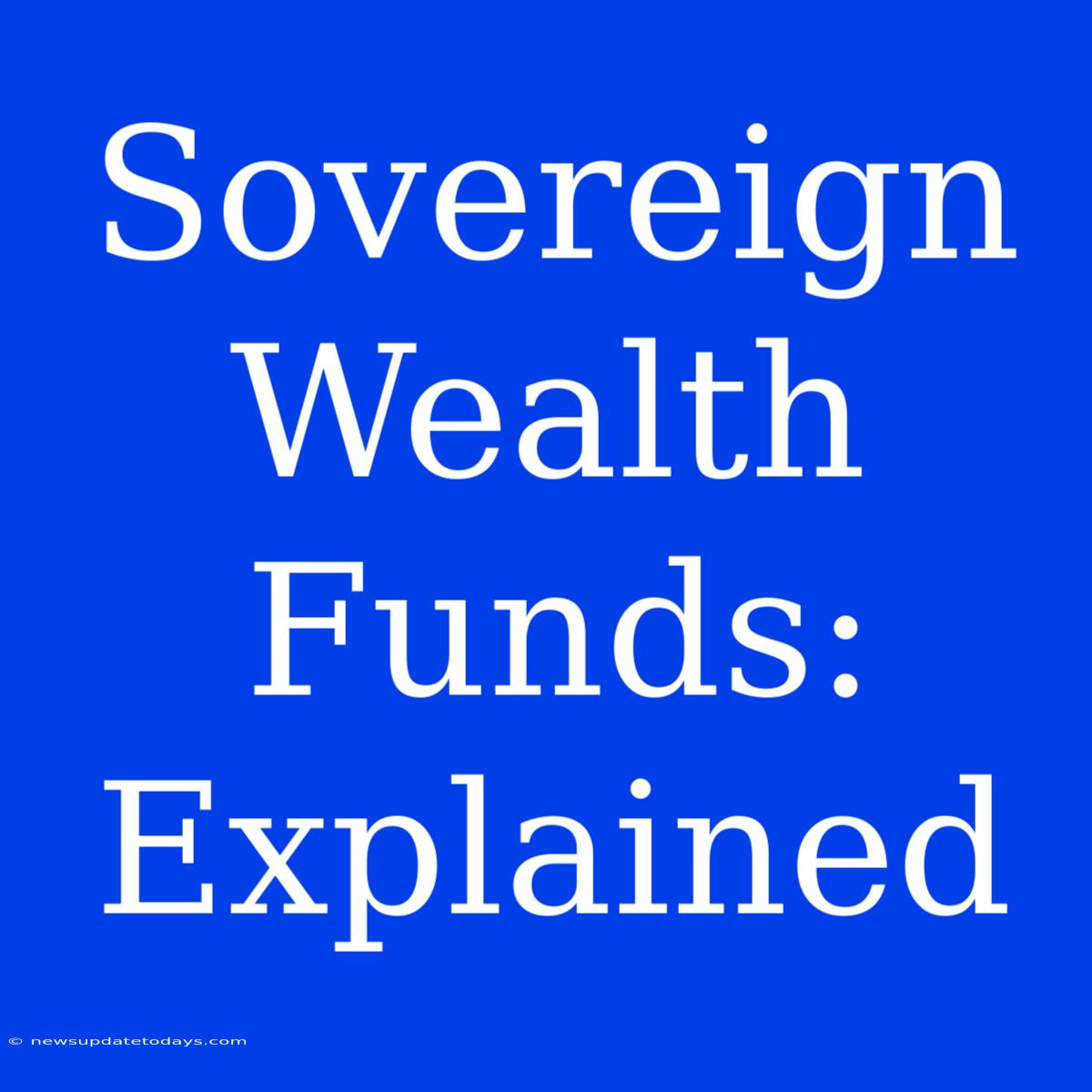Sovereign Wealth Funds: A Deep Dive into Global Investment Powerhouses
Sovereign wealth funds (SWFs) are investment vehicles controlled by government entities, typically accumulating vast reserves from countries rich in natural resources like oil, gas, or minerals. These funds represent a significant force in global finance, impacting markets and driving economic development. Understanding their role and investment strategies is crucial for anyone interested in global economics and finance.
What are Sovereign Wealth Funds?
SWFs are essentially state-owned investment funds. Their primary objective is to manage and invest national assets strategically, often to achieve long-term economic goals. This can include:
- Stabilizing the economy: Buffering against volatile commodity prices or external economic shocks.
- Generating future revenue: Investing in assets to provide returns that support future government spending.
- Diversifying the economy: Moving away from dependence on a single industry or resource.
- Promoting national development: Investing in domestic infrastructure projects or strategic industries.
Types of Sovereign Wealth Funds:
SWFs are categorized based on their primary objectives and funding sources:
- Stabilization Funds: These funds prioritize protecting a nation's economy from fluctuations in commodity prices or external factors. They often hold highly liquid assets.
- Development Funds: Focus on long-term domestic economic development by investing in infrastructure projects, businesses, and industries within the country.
- Reserve Funds: These funds maintain a country’s foreign exchange reserves and are generally more conservative in their investment approach.
- Pension Reserve Funds: Set aside to fund future pension liabilities.
Key Players in the Global SWF Landscape:
Several SWFs manage trillions of dollars in assets, making them significant global investors. Some notable examples include:
- Norway's Government Pension Fund Global: One of the largest SWFs globally, known for its responsible investment approach and focus on sustainability.
- The China Investment Corporation (CIC): A major player investing heavily in global markets, including real estate, infrastructure, and private equity.
- The Abu Dhabi Investment Authority (ADIA): Renowned for its long-term, value-oriented investment strategy and significant holdings in various asset classes.
- The Saudi Public Investment Fund (PIF): Focusing on ambitious diversification efforts and large-scale investments in both domestic and international projects.
Investment Strategies and Asset Allocation:
SWFs employ diverse investment strategies, tailoring their portfolios based on their specific objectives and risk tolerance. Common asset classes include:
- Equities: Investing in publicly traded companies worldwide.
- Fixed Income: Holding government and corporate bonds.
- Real Estate: Investing in property across various geographical locations.
- Private Equity: Investing in privately held companies.
- Infrastructure: Investing in projects like transportation, energy, and communication networks.
Challenges and Criticisms:
Despite their significant contributions to global finance, SWFs also face challenges and criticisms, including:
- Transparency and Governance: Concerns exist regarding the lack of transparency in some SWFs' operations and investment decisions.
- Geopolitical Risks: SWF investments can be subject to political and economic risks in various countries.
- Competition and Market Impact: The sheer size of some SWFs can significantly influence global markets, potentially creating both opportunities and challenges.
The Future of Sovereign Wealth Funds:
SWFs are expected to remain a crucial force in global finance, adapting to evolving economic conditions and expanding their investment horizons. The increasing focus on sustainable investing and ESG (environmental, social, and governance) factors will also likely shape their future strategies. Understanding these powerful entities is essential for navigating the complexities of the global financial landscape.

